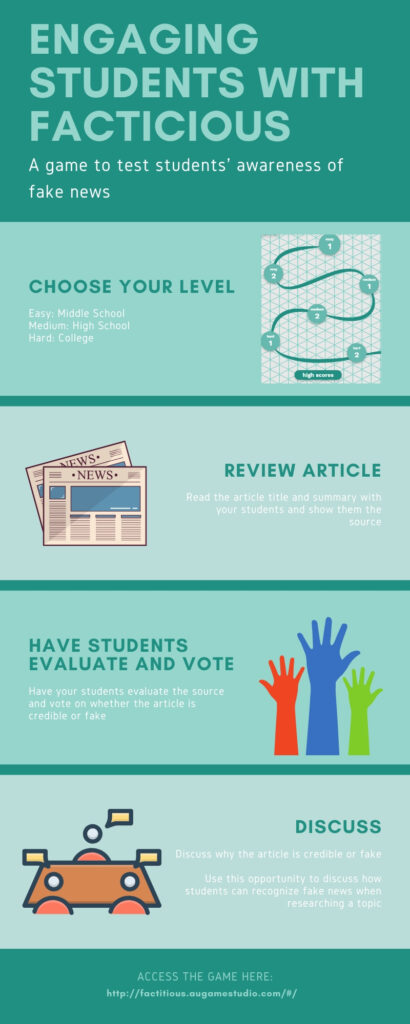
May 2020



“My librarian is always right there for my students and me. Anything I need, I go to her and she is always happy to help. ” – Amy Ward, DSW
“In the past, it felt like ‘good luck,’ but it is more interactive here. With my liaison librarian, if I can’t find something, she is always there to find it WITH me.”
“First, maintain good internal customer service and be approachable for students and faculty. We need to know you will be kind to us. Second, curate updated and relevant information. We expect you to be the expert in information retrieval.”
“My librarian and I care about each other. Collaboration is all about relationships, and if you don’t have a strong relationship, you could be the best liaison in the world and you still won’t be collaborative.”
“Take the library and academic discipline out of the equation and come to faculty openly to try to establish a genuine rapport. Than you can introduce how you can be useful to one another.”
Amy Ward, DSW, is the Director of the Social Work Program at East Central University in Ada, OK.
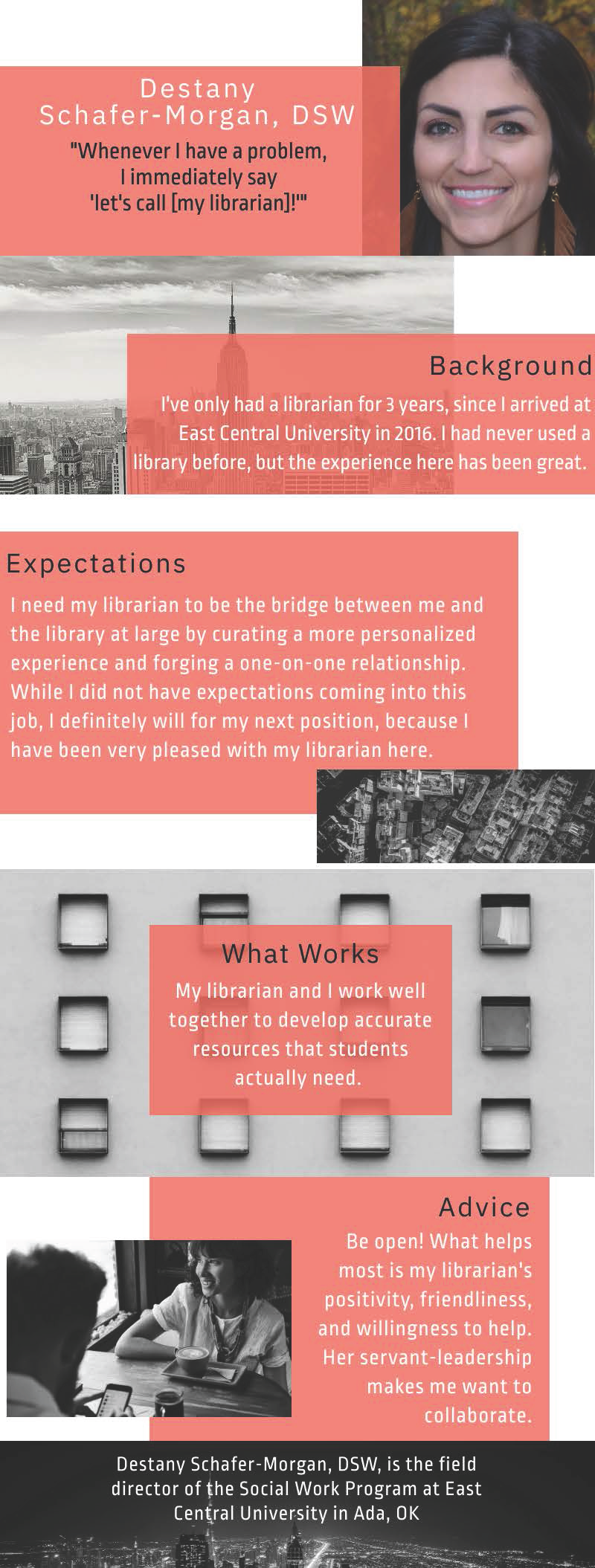
“Whenever I have a problem,
I immediately say ‘let’s call [my librarian]!”‘
I’ve only had a librarian for 3 years, since I arrived at East Central University in 2016. I had never used a library before, but the experience here has been great.
I need my librarian to be the bridge between me and the library at large by curating a more personalized experience and forging a one-on-one relationship. While I did not have expectations coming into this job, I definitely will for my next position, because I have been pleased with my librarian here.
My librarian and I work well together to develop accurate resources that students actually need.
Be open! What helps most is my librarian’s positivity, friendliness, and willingness to help. Her servant-leadership makes me want to collaborate.
Destany Schafer-Morgan, DSW, is the field director of the Social Work Program at East Central University in Ada, OK.

From Dan Pink’s video: https://bit.ly/1nF15L8
Consider the language you use with faculty and how it contributes to the power dynamic.
See the COIL blog for examples of successful collaborations.
Meulemans, Y.N. & Carr, A. (2012). Not at your service: Building genuine faculty-librarian partnerships. Reference Services Review 41(1), 80-90. doi:10.1108/00907321311300893
Create a teaching philosophy that answers the following questions:
What requirements should requests meet? What are you willing to do?
Examples:
What are common misconceptions about library instruction among faculty? How can you respond when faced with those misconceptions?
See the slides with sample participant responses to the activities at https://bit.ly/2xJH7si
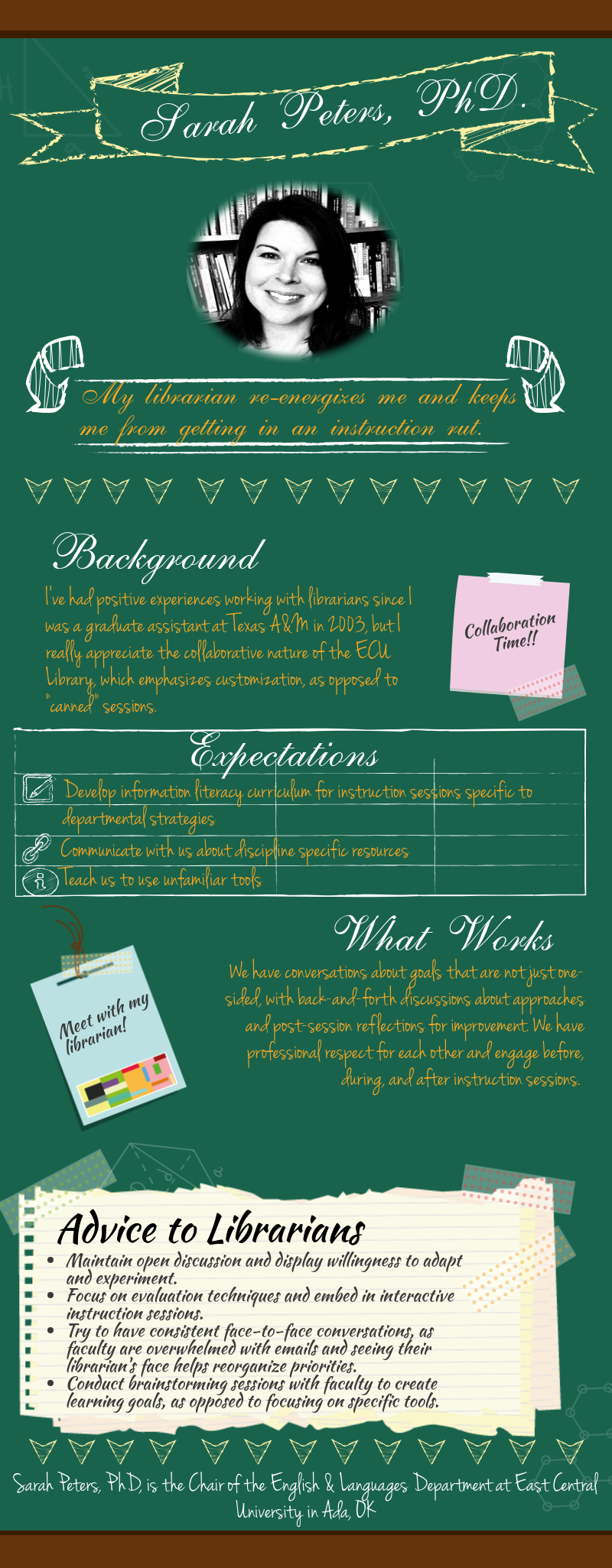
My librarian re-energizes me and keeps
me from getting in an instruction rut.
I’ve had positive experiences working with librarians since I was a graduate assistant at Texas A&M in 2003, but I really appreciate the collaborative nature of the ECU Library, which emphasizes customization, as opposed to “canned” sessions.
We have conversations about goals that are not just one-sided, with back-and-forth discussions about approaches and post-session reflections for improvement. We have professional respect for each other and engage before, during, and after instruction sessions.
Sarah Peters, P hD, is the Chair of the English & Languages Department at East Central University in Ada, OK.
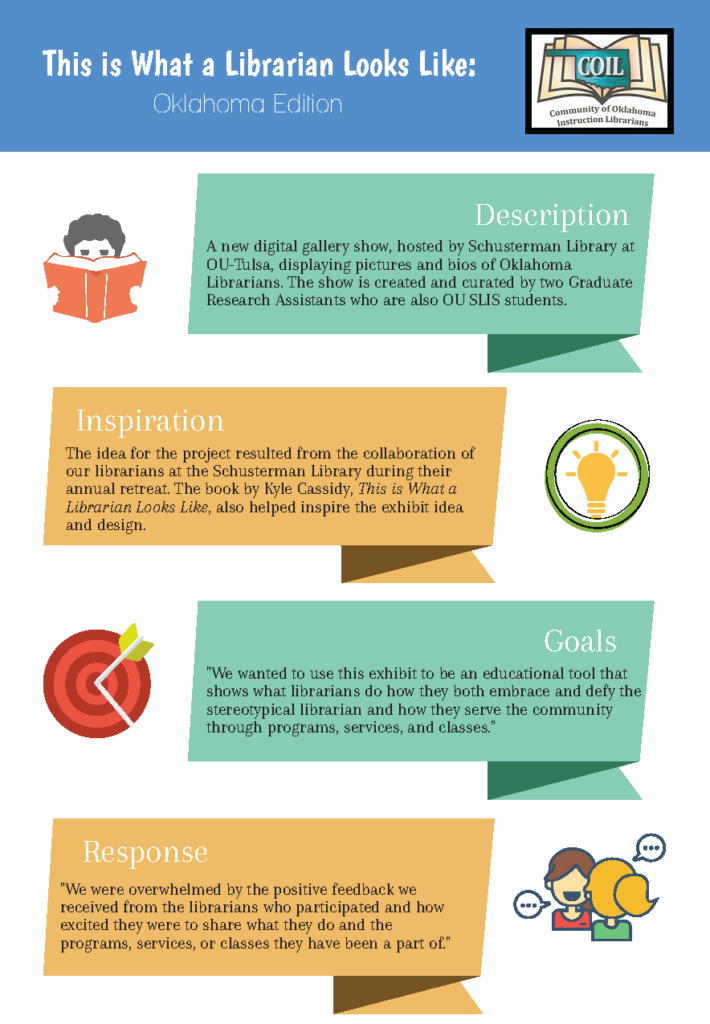
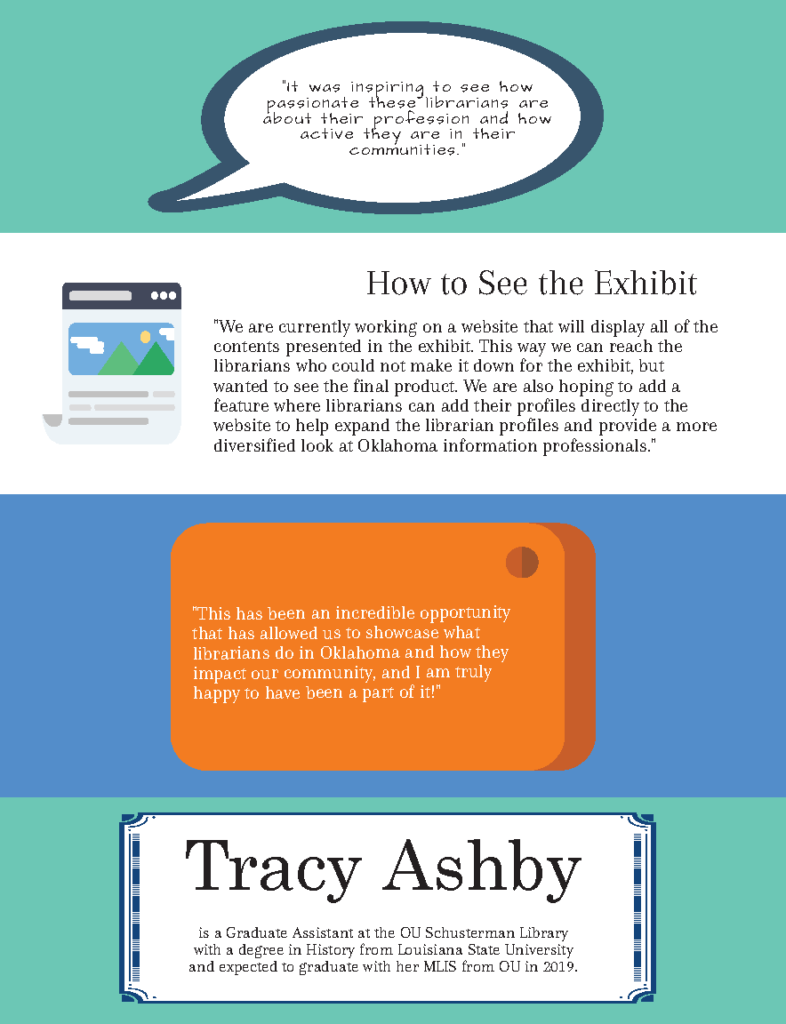
A new digital gallery show, hosted by Schusterman Library at OU-Tulsa, displaying pictures and bios of Oklahoma Librarians. The show is created and curated by two Graduate Research Assistants who are also OU SLIS students
The idea for the project resulted from the collaboration of our librarians at the Schusterman Library during their annual retreat. The book by Kyle Cassidy, This is What a Librarian Looks Like, also helped inspire the exhibit idea and design.
“We wanted to use this exhibit to be an educational tool that shows what librarians do how they both embrace and defy the stereotypical librarian and how they serve the community through programs, services, and classes.”
“We were overwhelmed by the positive feedback we received from the librarians who participated and how excited they were to share what they do and the programs, services, or classes they have been a part of.”
“It was inspiring to see how passionate these librarians are about their profession and how active they are in their communities.”
“We are currently working on a website that will display all of the contents presented in the exhibit. This way we can reach the librarians who could not make it down for the exhibit, but wanted to see the final product. We are also hoping to add a feature where librarians can add their profiles directly to the website to help expand the librarian profiles and provide a more diversified look at Oklahoma information professionals.”
“This has been an incredible opportunity that has allowed us to showcase what librarians do in Oklahoma and how they impact our community, and I am truly happy to have been a part of it!”
Tracy Ashby is a Graduate Assistant at the OU Schusterman Library with a degree in History from Louisiana State University and expected to graduate with her MLIS from OU in 2019.